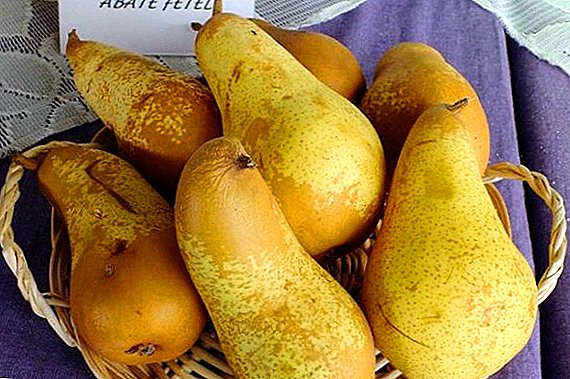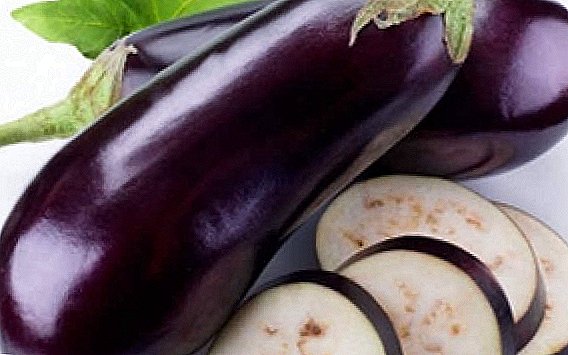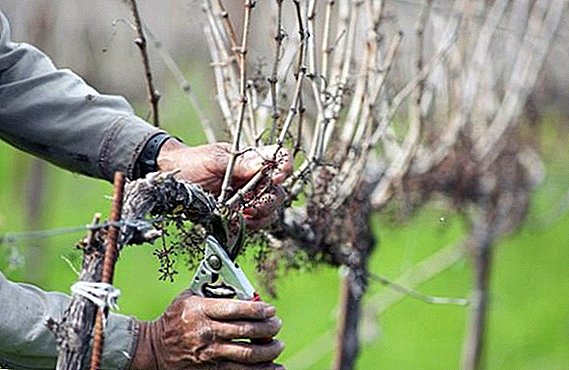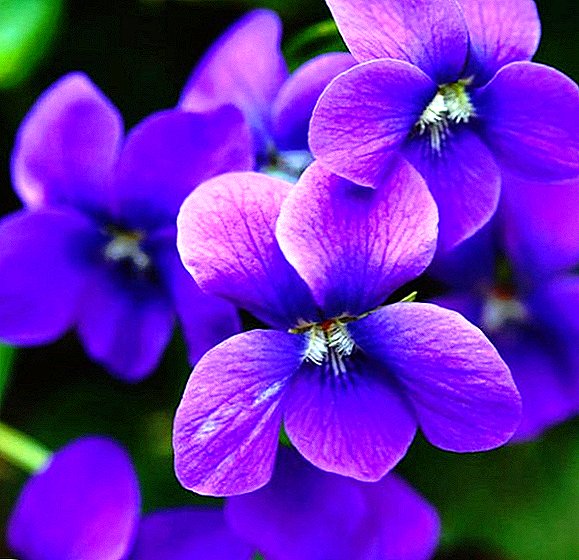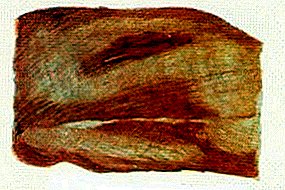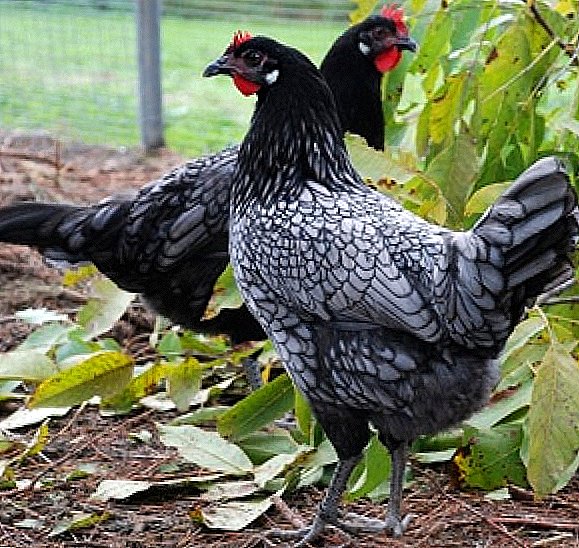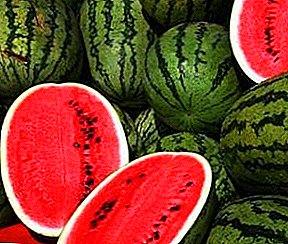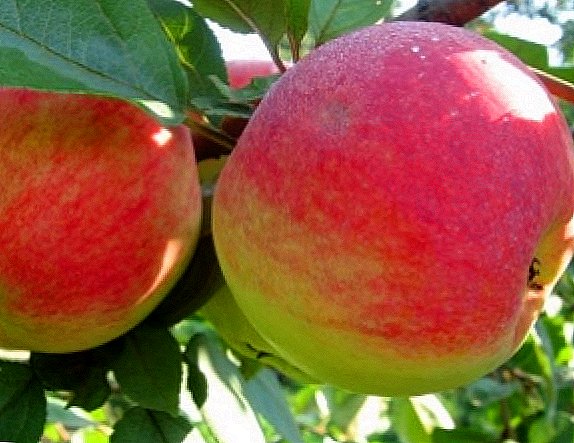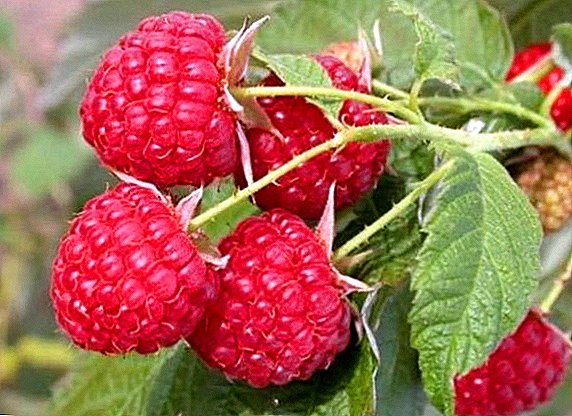 Raspberries varieties Kirzhach has long been grown on the dacha plots of many people. It does not differ in some divine characteristics, but for its normal yield, especially careful care is also not required. Therefore, this raspberry variety is one of the most popular in our country. In the article we will tell how to plant and grow a shrub with delicious raspberries.
Raspberries varieties Kirzhach has long been grown on the dacha plots of many people. It does not differ in some divine characteristics, but for its normal yield, especially careful care is also not required. Therefore, this raspberry variety is one of the most popular in our country. In the article we will tell how to plant and grow a shrub with delicious raspberries.
Description and distinctive characteristics
According to the botanical description, Raspberry Kirzhach belongs to the Rosy family of the Rubus family, and the Russian breeder V. Kitchin derived this shrub variety, he managed to get quite positive reviews. In the State Register of the Russian Federation, the plant was officially registered in 1994.
The shrub does not differ in especially large fruit sizes. Over the past 20 years, many varieties of raspberry have been developed, which has fruits of much larger sizes. But Kirzhach has long been established in our markets and is still popular because of its unpretentiousness in weather conditions and feeding.

Important! Before planting Kirzhach raspberry cultivars, the soil should be treated with copper sulfate solution. It is an excellent antiseptic, so that your raspberry jam will not affect various microorganisms.This variety of raspberries was found for the Volga-Vyatka, North-Western and Central regions of Russia. Kirzhach's genes have characteristics that are ideal for growth and fruiting in these regions of Russia. However, the plant is notable for its good growth in the territory of Ukraine, Belarus, and the Caucasus.
Poor tolerance to severe frosts puts a ban on the cultivation of varieties in the Siberian region of Russia. Because of its universal purpose, Kirzhach is very much appreciated in amateur gardening, but at large plants, raspberries are practically not used.
Kirzhach is a variety of raspberry medium ripening. Berries grow on last year's shoots. Berry picking takes place in July (sometimes later, depending on the region of cultivation). There is a fairly good yield with an average size of berries - 70-100 c / ha.
Raspberry bush is quite powerful, mid-range with a small number of light purple thorns. Annual shoots upright, green with a waxy coating. Two-year shoots become lignified, but do not cease to bear fruit.

The fruits have the form of a blunt cone, are covered with a slight down, the color is bright pink, and when fully matured it is richly crimson. The tasting commission on a five-point scale rated Kirzhach at 4.3 points. Fruits have sweet and pleasant taste with a slight sourness. The intensity of the aroma is medium, the smell resembles a delicious and fragrant forest raspberry.
This raspberry jam has good transportability, winter resistance is moderately average. The variety is resistant to anthracnose and spider mites. It has a weak resistance to overgrowth virus, root system diseases and damage by the raspberry beetle.
Familiarize yourself with the cultivation of other raspberry varieties: "Polka", "Cumberland", "Caramel", "Yellow Giant", "Heracles", "Atlant", "Gusar" and Tarusa raspberry tree.
Raspberry planting technology
Planting raspberries through the right technology ensures excellent shrub yields over the years. Therefore, now we will examine in detail the intricacies of landing Kirzhach.
Place to grow
Need to plant shrubs in places well clarified by sunlight. Raspberry loves a lot of sun and the yield directly depends on it. If you plant a plant in partial shade or shady places, then its stems will begin to stretch strongly, blocking the access of the sun to the fruits. And this will negatively affect the quantity and quality of the crop.

Raspberry bush should be well protected from strong winds and drafts. Considering that Kirzhach reaches a height of 2-2.5 m, it is not recommended to plant it near the beds, as it will create a shadow. Landing near ponds or groundwater is also unsuccessful. In such places, raspberries will be more often damaged by diseases.
Did you know? Russia is the world leader in growing and selling raspberries.By the type of soil raspberry especially unpretentious, it will grow well on loamy soils and on black soil. It is necessary to take into account the acidity of the soil, it should vary within 5.7-6.5 pH. It will be good if on the place where you are going to plant raspberries, grain or legumes were previously grown.
Optimal timing
Terms of planting crimson plants, first of all, depend on the climatic zone in which you are going to plant them. In the southern regions the best time to land will be September - early October. Autumn planting allows the plant to take root in the soil to the first frost, and from spring to start growing.
In the south, spring is hot and not very wet, so raspberry bushes can start during the growing season even before their roots take root in the soil, and this often leads to the death of the plant.

In the northern regions of our country it is better to plant raspberries in spring. Spring here is marked by good and prolonged humidity, which favorably affects the adaptation of the plant. But in the fall in the northern regions of the landing is better not to. Here frosts very often come ahead of time, and even if the snow falls at the wrong time, the shrub certainly does not take root.
As experience shows, in the middle zone of our country Kirzhach is better planted in the fall, namely in early October. Before the first frost, the plant has time to settle down, and in the spring it normally enters the growing season.
Landing pattern
Raspberries planted in a prepared well. The fossa should be of such depth that the rhizome kidneys deepen by at least 3 cm. It is necessary to sprinkle the roots of the bush with a mixture of sand and humus. Before planting, the roots of the shrub need to be treated with wood ash, such actions will protect the plants from damage to the root system by bacterial microorganisms.
Kirzhach very often affects root cancer, therefore, it is necessary to plant bushes as far as possible from each other. The optimal distances between the raspberry bushes will be 25-35 cm in a row, and 45-55 cm between the rows. If you own a large dacha, then each of the distances can still be increased by 10-15 cm.

In addition, if it is very densely planted shrubs, then at harvest it will be difficult to get close to them. Immediately after planting the soil is desirable to mulch. Straw, humus or sawdust is well suited as mulch.
Recently, varieties of remontant raspberries have become increasingly popular.
What the variety loves: care features
This sort of raspberry is not particularly fascinating to frequent watering, weeding, feeding, etc. However, with some technology of care, the yield of Kirzhach can be significantly increased.
Watering
Watering raspberries is needed so that its root system can normally grow deep into the soil. The root system is particularly active in growth between the last decade of May and the first decade of June.

If the shrub is left without proper watering, then it starts to let out a lot of shoots and additional leaves, which adversely affects the quality of the crop. Excess leaves and shoots allow the bushes to absorb the moisture they need from the air. To prevent this from happening during the period we indicated above, it is necessary to water raspberry bushes with special care.
When watering you need to take into account the fact that the earth should be soaked with water 30-35 cm deep. Count the amount of water for irrigation as follows: one ten-liter buckets of water should be poured onto one running meter of a row of raspberries.
Important! After watering, be sure to loosen the soil, otherwise a dense crust will form.If summer is hot and dry, then during the three summer months the raspberries should be watered 6-8 times. The first time watering should be carried out in mid-May, and the last - in late August. The intervals between watering should be about the same.
Top dressing
If the plant is properly fed with organic and mineral fertilizers, it can produce a rich and high-quality crop. Plays an important role correct alternate dressing. When in the spring you will loosen the soil around the bushes, you need to make a mullein with the calculation of 8 kg per square meter of soil.
Every spring (especially in the first spring for a raspberry), urea should be added at the rate of 20 g per 10 l of water. It stimulates the growth of raspberries and enhances its protective function. It is very important to process the bushes of Kirzhach during their flowering period. For this purpose, boric acid is used, which is dissolved in water in a ratio of 20 g of acid to 10 liters of water.
In the period when the fruits begin to form, shrubs can be treated with nitrophoska. It is also diluted in water and watered under a bush. At 10 liters of water, add 20-30 g of nitrophoska. When preparing raspberry bushes for winter, the soil is usually dug up. At this time, superphosphate (25g / 10l of water) and potassium chloride (10-15g / 10l of water) must be applied to the soil.
Pruning
Cutting raspberries is best in the spring, immediately after the snow melts. You need to delete everything infected, broken, weak and excess shoots. Thinning raspberries is made by various methods, depending on how the raspberry is planted (bush or common).
Did you know? The first mention of raspberry dates back to the 3rd century BC. And Roman Cato the Elder mentioned it in his writings.All dry and old shoots need to be cut at the very ground. Do not leave stumps, otherwise they may be infected or harmful bacteria that can later hit healthy shoots. Branches that are affected by the disease should be removed before the first healthy shoots. Sometimes, with very dense vegetation, it is necessary to shorten and live shoots, otherwise the berries may be small.
If the raspberry is planted by the bush method, then try to leave no more than 10 shoots per bush. Otherwise, the plant may be affected by various diseases. Raspberries, which grow with ordinary methods, should be cut so that the distance between the bushes is about 10 cm. This is very important for further garter shrubs.

Tying up
Many gardeners believe that tying raspberries is only necessary so that it does not grow into the aisle. But it is not so. Garter Kirzhach gives many positive effects. For example, if the raspberry bushes are properly tied up, the risk of bacterial diseases is immediately reduced.
With strong winds, hail or heavy rain, raspberry shoots will break less. In addition, it is much easier and more convenient to pick fruits from a well-tied raspberry.
Important! With a very thick planting of raspberry bushes, the risk of bacterial root cancer is affected by the root system.For the garter of vegetation, it is necessary to install columns about two meters high along the row. You can put the pillars and above, because the variety Kirzhach reaches a height of 2.5 m. The pillars must be placed at a distance of 3-4 m.
Next on the posts you need to stretch the wire (diameter 3-4 mm). The wire can be tightened in different ways, but the most optimal way is this: we stretch one wire at a height of 60-70 cm from the ground, the other - 1.3-1.4 m from the ground. When the garter is necessary to arrange the shoots so that 70 shoots fit 7 shoots.
How to prepare the plant for winter
In late winter, before the start of frosts, the soil around the raspberries needs to be treated with mulch. Straw, sawdust, peat or humus can be used as mulch. The mulch layer should be 10-15 cm thick. In the northern regions of our country, where the raspberry of Kirzhach requires special protection from frost, a layer of mulch should be 15-25 cm.
In addition to red raspberries, gardeners also often grow black and yellow raspberries in garden plots.
Another important nuance of preparing raspberries for winter is its bending down to the ground. Shoots must be tied with a rope and tied to the bottom wire of the mechanism for tying. After bending down, the raspberries should not rise higher than 40-50 cm in height. This is done so that the shoots of the plant do not freeze. After binding, they will cover a thick layer of snow, which is a natural frost protection.
If snowless winters prevail in your region, then shrubs need to be protected in an artificial way. For this you can use nonwoven covering materialto bind to the garter design. Some gardeners use waterproof plywood constructions as shelters.

Pros and cons varieties
Main Kirzhach's positive characteristics:
- High quality berries. Differs in good taste characteristics. In addition, because of its high density, it has excellent transportability, which makes it possible to use this raspberry variety for commercial purposes.
- The fragrance is very reminiscent of forest raspberries. A forest raspberry is very much appreciated among fans of this berry culture.
- Raspberry variety unpretentious to soil conditions.
- Does not require special care. Leaving is necessary in cases if you want to achieve the maximum quality of productivity.
- The small size of the berries compared to the newly bred varieties.
- Bad winter hardiness. It is best to grow in the southern regions. In the north, you need special shelters for the winter.

Breeding rules
The raspberry breeds green or root cuttings. If you decide to propagate the shrub with green cuttings, then the best time for this is summer. Cut the green cuttings need at the root. After that, planting material is shortened to 7-10 cm, lowered into the solution to stimulate the roots for 12-15 hours. Root growth stimulants can be such: "Kornevin", "Heteroauxin", indolylbutyric acid, etc.
Next, the cuttings need to be planted in the greenhouse or under the film, to maintain a constant temperature (22-25 ° C) and humidity. It will be good if you also install a fogging installation. If you do not have such an opportunity, then young cuttings should be watered regularly. Full rooting of cuttings will occur in 30-35 days. After this, plants along with greenhouse earth can be planted in a permanent place.

Did you know? There is a purple raspberry. For the first time it was artificially crossed in Geneva in 1893.The best time for breeding root cuttings - spring. Part of the root system with a side branch is called the root handle. After separation, it is immediately suitable for planting. But it is better to plant it in the warm season, when the air temperature has already been established (about 22-25 ° C). In the first two weeks, root cuttings need regular watering. After 20-25 days, the cuttings should settle down completely in the soil.
As you can see, the variety "Kirzhach" without any special care can delight with its delicious berries. But if you want big harvests, then some efforts will have to be made, and he will thank you.


